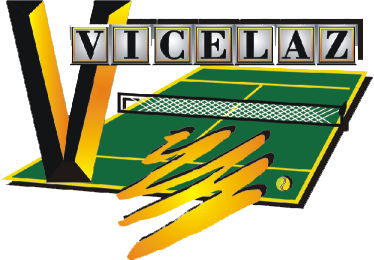KCl is highly polar as it is an ionic compound. 1 What kind of intermolecular forces are present in a mixture of potassium chloride and water? Explanation: An ion-dipole intermolecular force of attraction is an attractive force that results in an attraction between an ion and neutral molecule which has a dipole. 8. This one falls into the ionic forces. increases as reactant concentration increases. About a quarter of these are erythrocytes (red blood cells) and contain no genomic DNA. Liquids that do not dissolve in one another are called immiscible. Advertisement cookies are used to provide visitors with relevant ads and marketing campaigns. London dispersion force is also present because it occurs in all compounds. False, Which of the following aqueous solutions should have the highest boiling point? Water; Dichloromethane; Intermolecular forces: Solutions: 1. Required fields are marked *. London Dispersion occurs between the nonpolar molecules. The strength . Ionic Bonding. molality of the solution = 0.0125 mol/ 0.0152 Kg = 0.822 But opting out of some of these cookies may affect your browsing experience. Surface tension is a result of intermolecular interactions. HF: Dipole-Dipole intermolecular forces, Hydrogen bonds. *Heterogeneous The intermolecular force between the molecules are: (a) KCl: The intermolecular force between the molecule is an ionic bond. Turpentine C10 H16 and Kerosene C15 H32 form a solution , First, the number of moles of NaCl: % = 8.9 x 100 / 125 + 8.9 = 6.6 How can the mass of an unstable composite particle become complex? \[ e^{\Delta E/RT}=exp[(15 \times 10^3\; J/mol)/(8.314\; J/K*mol)(300\; K) = 2.4 \times 10^{-3}\]. Different types of intermolecular forces are listed below in the order of strongest to the weakest. At its closest, Pluto is 4.28 billion km from Earth. Do you expect a greater dipole-dipole interaction between two molecules that are antiparallel or between two molecules that are co-linear head-to-tail? 02/08/2008. KMnO4 is an ionic substance. Yes, you have way more DNA than you need to stretch it from Earth to Pluto. Chemistry Phases of Matter Intermolecular Forces of Attraction. methanol (CH3OH) in water, The enthalpy of mixing must be small compared to the enthalpies for breaking up water- water interactions and K-Br ionic interactions. Justify your answers. 4.7, A solution is made containing 20.8 g of phenol(C6H5OH) in 425 g of ethanol (CH3CH2OH). What is a weak intermolecular interaction? Ion-dipole forces always require a. an ion and a water molecule. Hydrogen bonds are a strong type of dipole-dipole interaction that only . Water molecules will surround the ions of Mg^2+ while Cl- bridges between water molecules and hydrogen bonds. 1-Propanol C3H7OH and methoxyethane CH3O C2H5 have the same molecular weigh. a hydrogen bonding b dipoledipole interactions c London (dispersion) forces d covalent bonds e ion . 9. , But Ammonia (NH3) gas can be easily compressed to a liquid why, Which substance in the pair has more volatile ? (e) the order with respect to B is 2 and the order overall is 3. Accessibility StatementFor more information contact us atinfo@libretexts.orgor check out our status page at https://status.libretexts.org. Polar molecules also participate in LDF, but this is sometimes not mentioned because they are less important than the other IMFs in those cases. This can be seen by looking at the formula or in the images of the two. What type of intermolecular forces will dominate Diethyl ether? All molecule self expression forces in them. 2.1 g pancreatin powder was dissolved in 30 mL ultrapure water, centrifuged at 4000 rpm for 10 min and then the supernatant was used as pancreatin solution. These forces govern many of the bulk physical properties of substances and mixtures, such as melting point, boiling point, and surface tension. Calculate. Because water is polar, substances that are polar or ionic will dissolve in it. The strength of the intermolecular forces between solutes and solvents determines the solubility of a given solute in a given solvent. There are 3 types of intermolecular force: London Dispersion, Dipole-Dipole (Example: Two \(NaCl\)) and Ion-Dipole (Example: \(Mg^+\) and \(HCl\)). What are the most important intermolecular forces found between water molecules? Which has the highest boiling point I2, Br2, and Cl2. Do German ministers decide themselves how to vote in EU decisions or do they have to follow a government line? For most purposes, these highly electronegative atoms are limited to only nitrogen, oxygen and fluorine. True/False. *the attractive forces between solute molecules must be overcome to disperse the solute uniformly in the solvent Octane and methane are both nonpolar molecules, so they have only London dispersion forces. Some molecules can only act as acceptors. True Necessary cookies are absolutely essential for the website to function properly. Dispersion and Ion-Dipole forces. Answer: To begin they do not have the same equilibrium distance: KCl has 0,267 nm while AgCl has 0,236. 1. sulfur dioxide (SO) 2. nitrogen gas (N) hydrogen fluoride (HF) carbon dioxide (CO) neon gas (Ne) 5 6. magnesium chloride (MgCl) dissolved in water (HO) . Strong. Why, (e) CO2 is formed twice as fast as ethane is consumed. Intermolecular forces of i2, co2, h2O, ch3br, and ch4. As shown in Figure 1 b and 1c, we can clearly see that the carboxyl oxygen of ligand connected two Cd 2+ ions through 2-O bridge to form a . If hydrogen is burning at the rate of 0.96 mol/s, what is the rate of consumption of oxygen? i = 1 for glucose as it does not undergo any association/dissociation. The atomic weigh of Iodine = 127, Bromine = 80, and Chlorine = 35.5. 100.42 oC oxygen is a reactant in combustion and the concentration of oxygen is higher in pure oxygen than it is in air. 2. The distance, along the helix, between nucleotides is 3.4 . The average rate of disappearance of A between 10 s and 20 s is __________ mol/s, As temperature increases molecules move faster interaction increases rate Decreases Intermolecular forces are responsible for the non-ideal Intermolecular force in water molecule which hold two molecules together . Identify the solvent and solute in the resulting solution. Hydrogen bonding involves a donor molecule and an acceptor molecule. eg. The cookie is set by GDPR cookie consent to record the user consent for the cookies in the category "Functional". Moreover, when we consider water, it is one of those substances that can occur in all three states - Solid, Liquid, and Gaseous state. Either by mass or by moles, the obvious minor component is sucrose, so it is the solute. Calculate an ion-ion interaction energy between \(K^+\) and \(Cl^-\) at a distance of 600 pm. False, Here, we see that molality and Kf will be same as solvent is water. Stack Exchange network consists of 181 Q&A communities including Stack Overflow, the largest, most trusted online community for developers to learn, share their knowledge, and build their careers. Of the following compound, which one(s) is/are soluble? 1.0 M KNO3, The vapor pressure of a solution containing a nonvolatile solute is directly proportional to the. . This is wrong because K+ is hydrated as stated in the question. An ionic bond will be stronger than a polar bond, so that is why dipole-dipole interaction seems irrelevant, in comparison to ion-dipole forces. The freezing point of the solution is higher than that of the pure solvent Substances that experience weak intermolecular interactions do not need much energy (as measured by temperature) to become liquids and gases and will exhibit these phases at lower temperatures. 29 Hydrogen bonding is also directional a bond can only qualify as a hydrogen bond if the three participating atoms are in roughly a straight line (180-degree angle). The more hydrogen bonding, the greater the boiling point. o Non-polar oil does not interact with polar water. rev2023.3.1.43269. 361 torr, moles sucrose = 4.27 g / 342.3 g/mol=0.0125 So, depression in freezing point = i m Kf Now, i = vant hoff factor The forces present in the homogeneous solution consisting of KCl and H2O are ion-dipole interaction and London dispersion forces. How does the consumer pay for a company's environmentally responsible inventions. b. a cation and a water molecule. Because of these dipole-dipole forces, polar compounds tend to have higher melting and boiling points than nonpolar compounds. Explain why methane (CH_4\) is used as the primary heating gas in Alaska during wintertime instead of the more commonly used butant or propane gases use in the lower 48 states. 1. The hydrogen bonds are strong intermolecular forces What is meant by the competitive environment? Which one has higher boiling point why? The ion-ion interaction energy is given by Coulomb's law. The weigh is proportion to the London dispersion force, and the higher molecular weigh, the larger the force. *Melting Point Calculate the potential energy of interaction between a Cl- ion situated 120 pm away from an \(H_2O\) molecule with a dipole moment of 1.85 D. \[\mu = 1.85 \cancel{D} \times \dfrac{3.3356 \times 10^{30} \; C \cdot m}{1\;\cancel{D}} = 6.18 \times 10^{-30}\; C \cdot m\], \[V = \dfrac{q\mu}{4\pi \varepsilon _{o}r^{2}} = \dfrac{(-1.602\times10^{-19}\;C)(6.18 \times 10^{-30}\; C \cdot m)}{4\pi (8.851 \times 10^{-12}\; C^{-2}N^{-1}m^{-2})(1.2 \times 10^{-10} \; m) ^2}\]. Potassium chloride is composed of ions, so the intermolecular interaction in potassium chloride is ionic forces. The LibreTexts libraries arePowered by NICE CXone Expertand are supported by the Department of Education Open Textbook Pilot Project, the UC Davis Office of the Provost, the UC Davis Library, the California State University Affordable Learning Solutions Program, and Merlot. Recall that boiling points are related to IMF strength. Chlorine , bromine and Iodine belong to the 7a/17 group of the periodic table with similarity in properties. \(HCl\) has a dipole moment of \(1.08\;D\). ). Arrange the follow species in order of decreasing melting points: CsBr, KI, KCL, MgF2. Water is considered a polar solvent. *neither substance is a solvent It is a physical science under natural sciences that covers the elements that make up matter to the compounds made of atoms, molecules and ions: their composition, structure, properties, behavior and the changes they undergo during a reaction with other substances. 6.6. Boiling point of the following substances increase in the order. Oxygen (O) is more electronegative than sulfur (S). The donor provides the hydrogen atom for the bond, while the acceptor provides the electronegative atom. The human body contains about 100 trillion cells. 10M. According to the this PubChem data table for the physical and chemical properties of carbon dioxide, it contains two hydrogen bond sites (each of the oxygens). *mol/L Dipole dipole. It is also non-polar. This occurs when two polar molecules become close to each other and the positive portion is attracted to the negative portion of another molecule. Why? *oil and water. Consider the combustion of hydrogen, 2H2(g) + O2(g)----> 2H2O(g). In order to provide a foundation for comprehensive utilization of scallop (Patinopecten yessoensis), the gel properties of hydrolysates from scallop m Source: I'm a chemistry professor. For example, one molecule of H2O is attracted to another H2O molecule because H2O is a polar molecule. By clicking Accept all cookies, you agree Stack Exchange can store cookies on your device and disclose information in accordance with our Cookie Policy. Chemistry also addresses the nature of chemical bonds . Dipole dipole forces Intermolecular force exhibited by polar molecules in which positive end of one dipole attracts the negative end of another polar molecule. Is potassium permanganate polar or nonpolar? interaction. INTERMOLECULAR FORCES - ANSWER KEY (from Tro, Chapter 11, page 512) 49. . LDFs are definitely included, but my question is whether dipole . Express the equilibrium distance re in term and show V = - , 4/3 r^3 ((6.022 x 10^23)/(2 mol))= 4/3 (1.70 x 10^(-10) m)^3 ((6.022 x 10^23)/(2 mol)), V/n=RT/P= ((0.08206 L atm K^(-1) mol^(-1) (298.2 K))/1atm, The fraction of this volume occupied by 2 mole of Ar, (1.239 x 10^-2 L mol-1)/ 24.47 L mol-1 = 2.5 x10 -7. a) What is the original of polarity in a molecule? Potassium belongs to Group 1 which only has 1 valence electron while chlorine. CS2 < I2 < NH2CH3. You are given the dipole moment of H2O is 1.82 D. The distance between these two is 2 . Many molecules are polar and can form bipole-bipole bonds without forming hydrogen bonds or even having hydrogen in their molecule. *Homogeneous, What is the substance called that is being dissolved in a solution? H2O. If 15 g of KCl03 are stirred into 100 g of water at 25C, how much of the KCl03 will dissolve? Ammonia (NH3) is make hydrogen bonding and it effect extensive hydrogen bonding between molecules. Intermolecular and Ionic Forces Introduction: Molecules are attracted to each other in the liquid and solid states by intermolecular, or attractive, forces. Therefore, the 1-Propanol has higher intermolecular attractive force and thus a higher boiling point. Which type of intermolecular attractive force operates between only polar molecules. Figure \(\PageIndex{2}\) Water (clear liquid) and oil (yellow) do not form liquid solutions. Which has the higher boiling point? Download the video lesson worksheet. In this case, to keep as much gas in solution as possible, the sodas are kept under pressure. 3. 13.E: Intermolecular Forces (Exercises) is shared under a CC BY-NC-SA 4.0 license and was authored, remixed, and/or curated by LibreTexts. Methane (\(CH_4\)) remains gas because its boiling point is about -160C. covalent bonding. Because ionic interactions are strong, it might be expected that . Hence, greater the i greater will be depression. The following data are collected: Calculate rate of disappearance of A in m/s 7. arrow_forward. This cookie is set by GDPR Cookie Consent plugin. Map: Physical Chemistry for the Biosciences (Chang), { "13.01:_Intermolecular_Interactions" : "property get [Map MindTouch.Deki.Logic.ExtensionProcessorQueryProvider+<>c__DisplayClass228_0.
Ffxiv Paladin Glowing Weapons,
Colin Friels Health,
Guided Mushroom Trip Oregon,
Articles K


